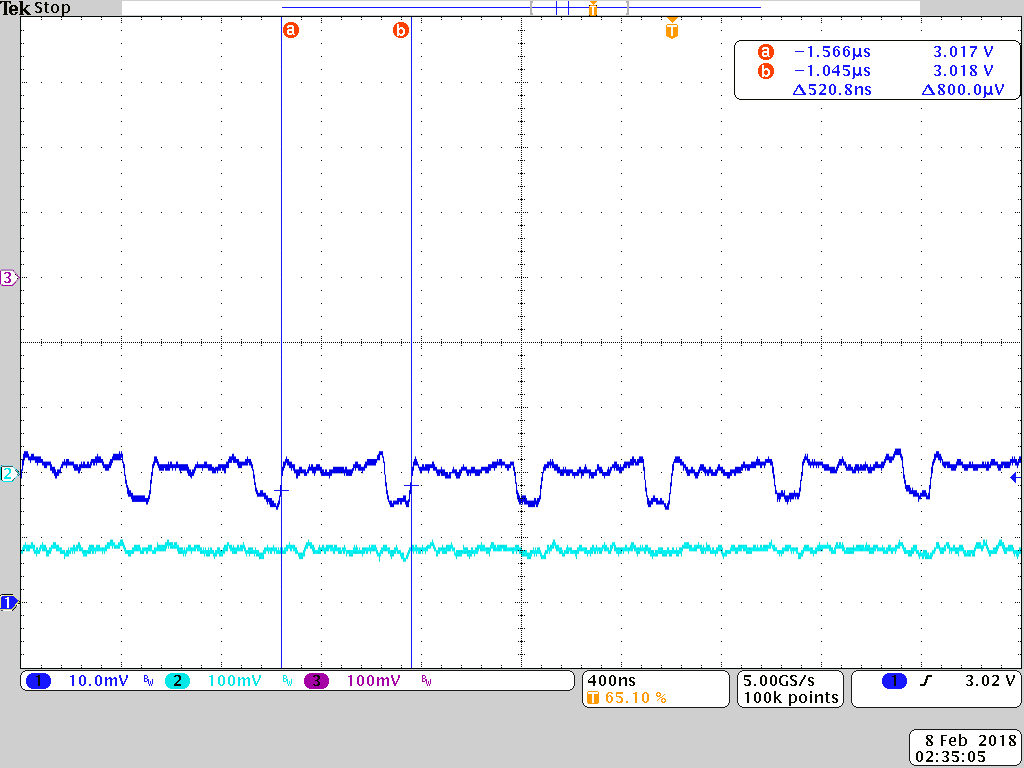Other Parts Discussed in Thread: , LM26480
Hi,
We are currently using the LM10506 in this configuration:
LDO 3V2 @10mA
Buck1: programmable from 2V5 to 3V0 20mA to 80mA
Buck2: programmalble from 2V5 to 3V0 20mA to 80mA
Buck3: fixed 1V2 10mA
We have (for EMC-reasons) chosen to have the switchers run in forced PWM mode.
It seems that when the load changes from 80 to 20mA on the buck 1 and 2 then they change from PWM to PFM regardless of the "forced PWM" setting.
Is there anything we can do to avoid this? any settings? or do we have to add a minimum-load?
The buck3 is always in pfm mode regardless. It would be great to have the possibility to have this in PWM mode also.
I know that we are sacrificing efficiency, but that is the trade-off, we are willing to make.
Best regards,
Bent



